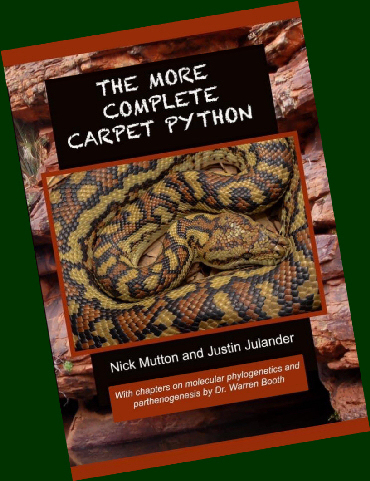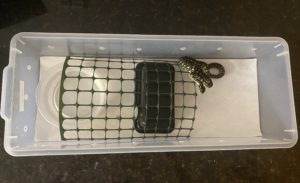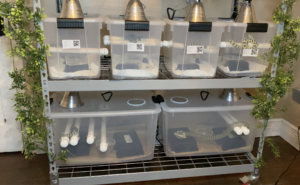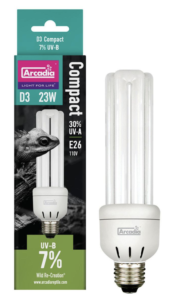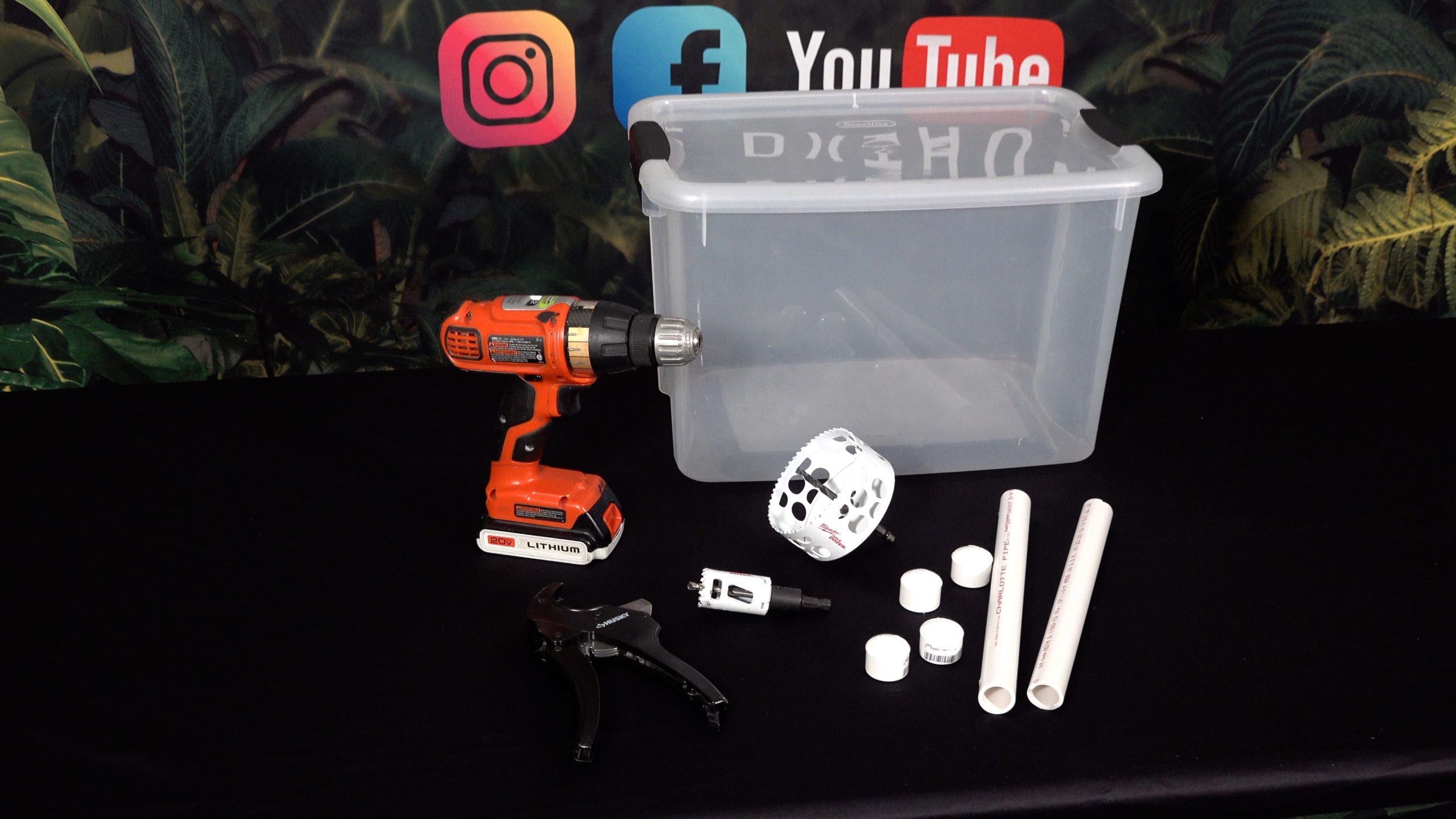Enclosure Basics
The most important consideration when buying a new snake is where it’s going to live when you get it home.
Most care sheets for adult carpet pythons include the minimum recommended requirements for enclosures. If you provide more than the minimum height and floor space, your adult snake will probably use it. The same is true for adding extra perches, hides, greenery, basking heat and UVB. If you have the space, time and money, there are many enhancements you can make to an enclosure that will improve your snake’s living situation.
How should you approach enclosures for younger snakes?
When baby snakes first hatch, they are usually housed in small tubs within a rack system. Tampa Snakes uses rack systems for hatchlings.
As our snakes grow larger and feel more secure, they are eventually taken from the rack and given larger, clear tubs with vented lids. Each tub has a dedicated heat mat below the warm side with a low wattage light fixture resting on a vent above perches. We put these enclosures on rolling storage shelves. The setup isn’t as efficient as a traditional rack system in terms of space, but it provides a much different living experience for a carpet python compared to a racked tub.
Several factors are important when preparing any Carpet Python enclosure:
Space
Temperature
Humidity
Security
Hides
Perches
Lights
Substrate & Water Dish
Cleanability
Quarantine
Space
Snake enclosures should start small and grow larger as the snake grows. An enclosure that’s too big can be scary to a small carpet. They are born out of the egg nervous about being eaten by predators. Smaller enclosures allow baby carpets to inspect their living space and to grow confident that predators are probably not hiding anywhere in it. That’s their top priority at that size. If the enclosure doesn’t calm this natural anxiety, they might be so concerned about it that they won’t eat. You’d probably be surprised how small of a home they feel safest in. Baby carpets should be able to easily learn their new home, including where the water is, where the best places to hide are and the quickest routes to the hiding spots. After dark, baby carpets can move around in the safety of nightfall to explore their living space—eventually you might even notice them perching at night to ambush potential prey.
Temperature
Snakes are cold-blooded so they change locations to regulate body temperature. For this reason, an enclosure for a carpet should have a warm side and a cool side. A heat source can be below the floor on one side and/or above the top. Heat rocks should not be used as they can burn your snake. A thermostat is needed to keep the warm side warm enough, but not hot. If you place the enclosure in a room that’s hotter than the warm side of the enclosure, or colder than the heat source can keep up with, the snake’s health will likely decline. The speed of this decline will be proportional to the error made in temperature.
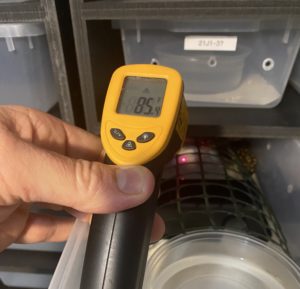
An essential tool to monitor your temps is a temperature gun. They are usually under $30.
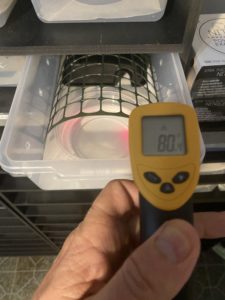
A warm side in the mid-80’s and a cool side in the mid-70’s is fine for most carpet pythons. Diamond Python juveniles and adults do well with cooler ambient temperatures than other carpets and many diamond keepers do not see basking heat as optional.
Humidity
Carpets do not require excess humidity. If a cage isn’t vented well enough, humidity can easily build up leading to potential health issues. 50% humidity is fine.
Security
Enclosure’s must be tightly closed to prevent your snake from leaving the safety of the enclosure. A small snake can squeeze into a lot of narrow places and is very difficult to find once out of the enclosure.
Hides
Carpets need to be able to hide. The tighter the fit, the better. Baby snakes can even hide in paper towel rolls. We recommend offering more than one hide to allow your snake to feel safe at various temperatures between the warm and cool side. You can find inexpensive, easy to clean hides at Reptile Basics. It’s good to keep extra hides to swap out during cleaning.
Perches
Carpet pythons are semi-arboreal. They sometimes use perches, shelves or even cage furniture to feel safer, get closer to basking heat or for an ideal ambush position when hunting.
Lights
There should be some sort of light cycle, even if it’s light from a window. Keep in mind that small enclosures should not have bulbs that generate excessive heat. In our smaller enclosures, we use low wattage basking bulbs (15 watt) to provide light and a small amount of heat for basking while perched. After meals, we usually see our snakes use their perches or shelves to get closer to the light bulb heat to aid in food digestion.
Another excellent enhancement is an appropriate UVB bulb. UVB is not required to keep your carpet python alive, but it can improve your snake’s enclosure if the amount of heat and % of UVB is appropriate to the enclosure. Some snake keepers do not see UVB as optional.
Substrate & Water Dish
At a minimum, enclosures should have paper towels, newspaper or craft paper as a substrate. Paper can easily be changed during cleaning. You can also use coconut fiber, cypress mulch or aspen bedding.
Water dishes should be easy to sanitize or disposable.
Cleanability
A major responsibility of snake ownership is routine cleaning of the enclosure. Beautiful cages with lots of decorations can be very difficult, if not impossible to clean quickly and thoroughly. Since snake feces is not always easy to clean, this leads some snake owners to skip frequent, routine cleaning. A clean enclosure is a lot more important to the health of your snake than aesthetics.
Quarantine
When you first bring any snake home, it’s hard to resist putting it on display in a permanent enclosure. What you may not realize is that there may be hidden problems with the new snake. Some issues are easier to spot and treat than others. Because of this, you should quarantine new snakes away from all other snakes for 60-90 days or longer. Even after the quarantine period, it’s still good to take precautions because some issues like internal parasites and viruses may not get noticed in the quarantine period. This is why you should always sanitize water bowls or use disposable plastic water bowls. You should also wash up before handling two different snakes and don’t give one snake food that another snake rejects.
The most common problem a new snake may have is snake mites. You don’t ever want these spread into your collection. There are some great videos about what snake mites are and how to treat for them. Any new snake arriving in your home could have these hitchhikers and not only are they bad for your snake, they also can be vectors for viruses. Mites can spread one snake’s virus to all of your other snakes. Don’t think it can’t happen to you.
A quarantine enclosure should meet all the basic needs of your snake and be easy to clean. You should use substrate that makes it easy to spot problems. White paper towels are great for this. When quarantining a new snake, we treat the paper towel substrate with mite spray throughout the quarantine period. A light coating of Provent-a-mite or RID lice spray does the trick. A can of RID spray can be found at Walmart for around $5. We even lightly spray around the outside of the tub (not inside). It must be allowed to fully dry. Sprays like this kill mites when dry and kill snakes when wet. We usually set up a quarantine enclosure the day before a new snake arrives. This gives everything extra time to dry and it lets us verify that the equipment is all working.
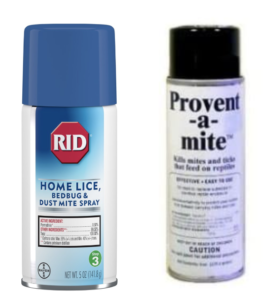
Here is a video showing you how to create the semi-arboreal temporary tub enclosures we use. The design is great for new snakes, existing younger snakes and for temporary enclosures when waiting on permanent enclosures to arrive. We adjust the size of the tub and heat mat depending on the size and age of the snake.
Click below to order The More Complete Carpet Python Book.
